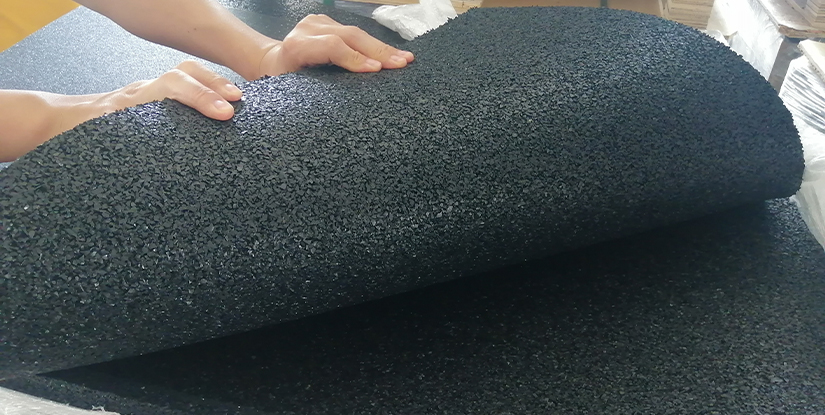Puzzle Floor Mats for Gym: Durable, Safe, and Versatile Gym Flooring

Why Choose Puzzle Floor Mats for Your Gym
Puzzle floor mats are a pragmatic choice for commercial and home gyms. Engineered for durability, shock absorption, and ease of installation, interlocking puzzle mats deliver a consistent surface that protects equipment, reduces impact on joints, and simplifies maintenance. Their modular design enables customized layouts and rapid replacement of damaged sections, making them cost-effective over the long term.
Materials and Construction
Most puzzle floor mats are manufactured from EVA foam or rubber. EVA offers lightweight cushioning and a softer feel that is ideal for functional training, stretching, and martial arts. Rubber provides superior durability and load-bearing capacity, recommended for areas with heavy free weights or cardio machines. High-quality mats often combine a dense core with a textured surface to balance traction and comfort.
Thickness and Performance
Selecting the right thickness depends on the intended use. Typical thicknesses range from 6 mm to 30 mm:
- 6–10 mm: Suitable for yoga, Pilates, and light cardio.
- 10–20 mm: Versatile for general gym zones, classes, and light weightlifting.
- 20–30 mm: Recommended for heavy weight areas, protecting subfloors from dropped weights.
Thicker mats enhance noise reduction and impact protection but may alter equipment stability. Verify equipment manufacturer guidelines when pairing with heavy machines.
Installation and Layout
Interlocking puzzle mats are designed for tool-free installation. Pieces lock together securely to form a seamless surface. Important installation considerations include:
- Acclimatize mats to the room temperature for 24 hours before installation.
- Start from a corner and work outward to ensure proper alignment.
- Use transition strips at doorways to prevent tripping and reduce edge wear.
Modular sections allow partial replacement without removing the entire floor, minimizing downtime in commercial settings.
Safety, Traction, and Hygiene
Surface texture influences traction and safety. Look for non-slip finishes and beveled edges to reduce trip hazards. Mats should be dense enough to resist compression under repeated loads. For hygiene, select mats with closed-cell construction or antimicrobial properties to limit moisture absorption and bacterial growth. Regular cleaning with mild detergent and occasional deep cleaning extends mat life and maintains a sanitary environment.
Customization and Aesthetics
Puzzle mats are available in various colors, thicknesses, and finishes. Options include engraved logos, color scripting for training zones, and patterned textures. Color-coding zones simplifies gym layout for circuits and class formats while reinforcing brand identity in commercial facilities.
Durability and Warranty
Assess product warranties and industry certifications. Commercial-grade rubber mats typically offer longer warranties due to superior resilience against heavy equipment and high foot traffic. Warranty terms often depend on intended use—residential versus commercial—so verify coverage for weight-bearing areas and multi-user environments.
Environmental and Cost Considerations
Eco-conscious buyers can choose mats made from recycled rubber or EVA with low volatile organic compounds (VOCs). While recycled options may cost more upfront, they contribute to sustainability and often match the performance of virgin materials. Budget planning should include lifecycle costs: initial purchase, installation, maintenance, and eventual replacement.
Applications and Use Cases
- Commercial gyms: Durable zones for free weights, machines, and group classes.
- Home gyms: Affordable protection for floors and equipment with DIY installation.
- Kids' activity areas: Soft surfaces for play and exercise sessions.
- Temporary or pop-up fitness events: Quick assembly and removal.
Buying Guide: Key Questions to Ask
- What is the primary activity in the area (weights, cardio, stretching)?
- What thickness offers adequate protection without compromising equipment stability?
- Are transition strips and edge pieces required for entrances?
- Does the product include a commercial warranty and safety certifications?
- Is the mat material low-VOC and environmentally responsible?
Maintenance Best Practices
Daily sweeping and spot cleaning prevent grit and debris from abrading surfaces. Use a neutral-pH cleaner for routine sanitation; avoid harsh solvents that can degrade foam or rubber. For heavy use areas, schedule monthly inspections to identify seams or sections that require replacement.
Conclusion
Puzzle floor mats provide a versatile, economical, and safe flooring solution for a wide range of gym environments. By choosing the appropriate material, thickness, and installation approach, facility managers and home users can optimize performance, longevity, and user safety while controlling lifecycle costs.
FAQs
- Q: Are puzzle mats suitable for heavy free weights? A: Yes, if you choose dense rubber mats 20–30 mm thick designed for weight areas.
- Q: Can I install puzzle mats over existing flooring? A: Generally yes; ensure the subfloor is clean, dry, and level.
- Q: How do I clean interlocking mats? A: Sweep daily and mop with a neutral-pH cleaner; avoid harsh chemicals.
- Q: Do puzzle mats reduce noise? A: Thicker rubber mats provide significant noise and vibration reduction.
- Q: Can damaged pieces be replaced? A: Yes, modular design allows selective replacement of damaged tiles.
- Q: Are puzzle mats slip-resistant? A: Many models feature textured surfaces for enhanced traction; always verify slip-rating.
- Q: How long do they last in a commercial gym? A: High-quality rubber mats can last 5–10 years depending on usage and maintenance.
- Q: Are there eco-friendly options? A: Yes, look for recycled rubber or low-VOC EVA materials.
- Q: Should I use underlay? A: Underlay is rarely needed under rubber mats but can benefit softer EVA tiles for added cushioning.

